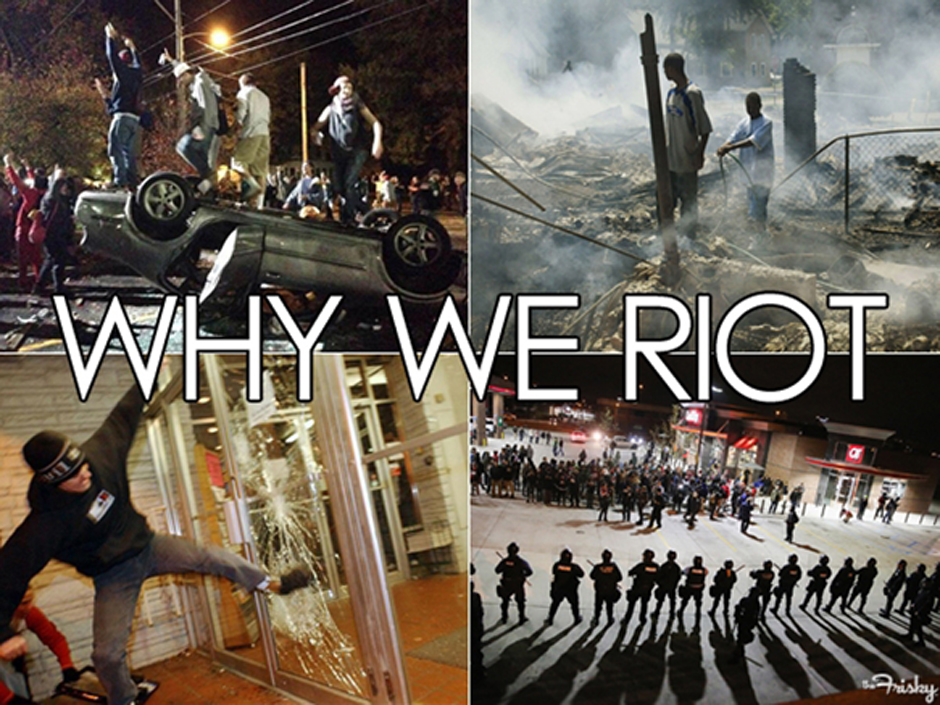
Why Americans Riot: 10 Historical Examples of Bad and Better Reasons to Riot
Riot Reason #1: Pumpkins
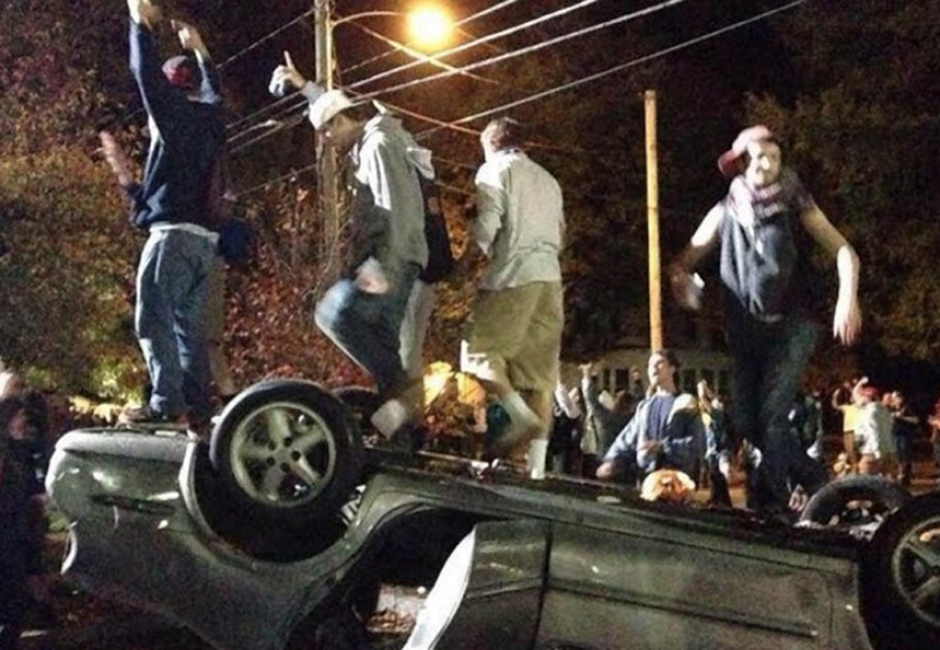
Keene, New Hampshire’s annual pumpkin festival turned riotous this weekend. (Photo: Twitter)
Reason: There are pumpkins everywhere! Who the hell said there should be pumpkins at a pumpkin festival!?
On Oct 18, 2014, in Keene, New Hampshire, an annual pumpkin festival ended in absolute mayhem. It seems that some of the students over at the local university had major fears of pumpkins and after a few drinks, they could not contain themselves any longer. Fearful, angry students took to the streets trashing private property, throwing anything that could be found and ever turned over a couple cars. “It almost felt like a war zone,” Ellery Murray, a sophomore at the university reportedly said. The night ended with at least 49 arrests.
Riot Reason #2: Police Brutality
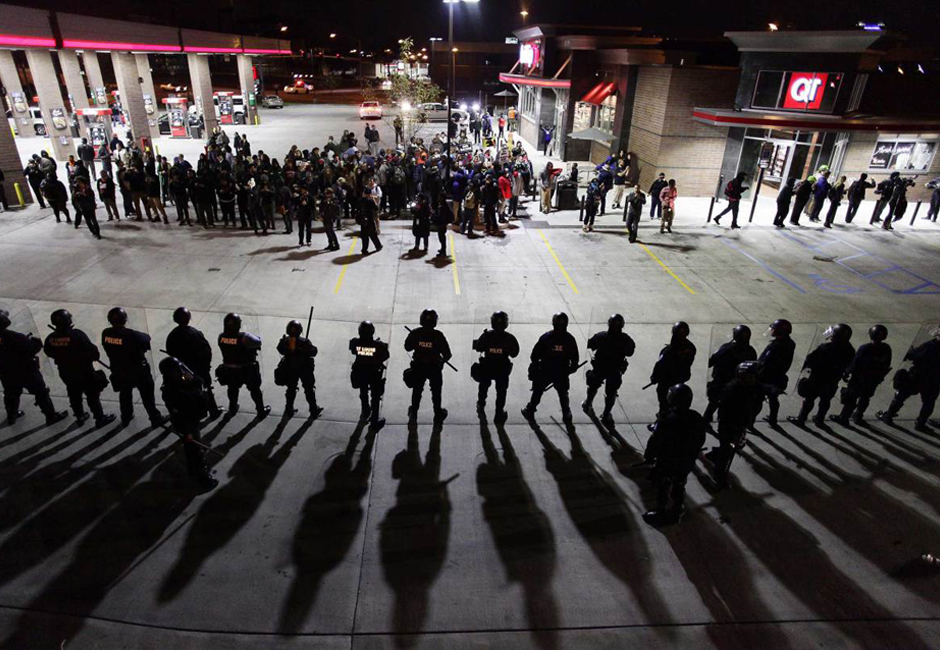
Police officers in riot gear hold a line as they watch demonstrators protest in St. Louis on Oct. 12, 2014. | Joshua Lott—AFP/Getty Images
Reason: Hands up, don’t shoot me because I am Black!
August 9, 2014, After Michael Brown, an 18-year-old Black male was shot six times and killed by a White officer, despite the fact that eye witnesses reported the teen had his hands up in the air, protesters took to the street and riots broke out. There were reports of looting, the vandalizing of vehicles and stores and two businesses were set of fire and some protestors threw bottles at officers. Over 30 were arrested on the first night of civil unrest and many more have been taken into custody in several other protests since that first riot. [Telegraph UK]
Riot Reason #3: The Right To Party
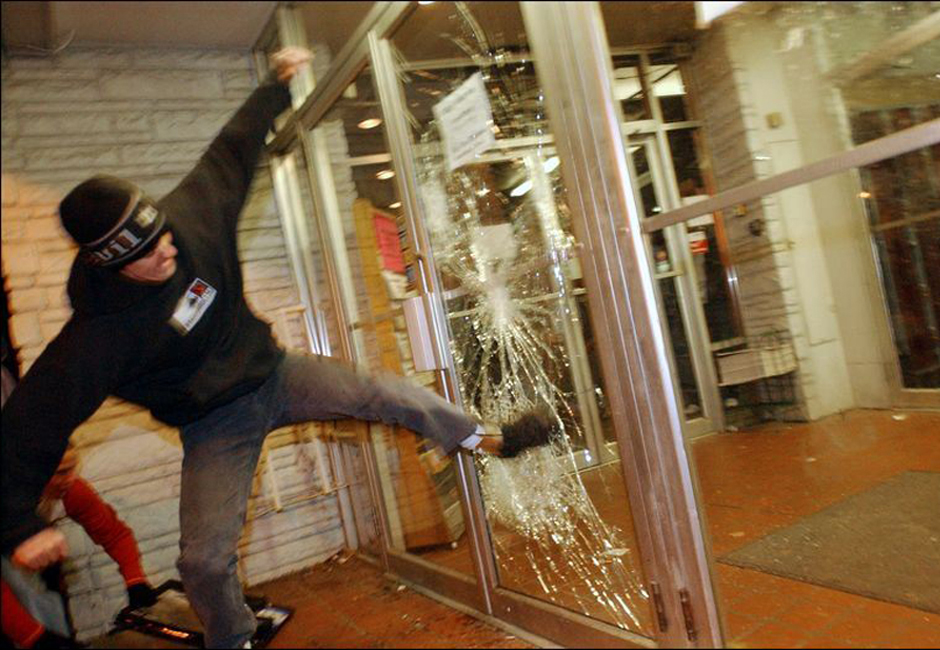
A reveler kicks in the door of Long’s Bookstore near the Ohio State campus, hours after the Buckeyes beat the University of Michigan, AP
Reason: We don’t want to stop partying! That’s our goddamned right as Americans!
Two years in a row, house parties hosted on Chittenden Avenue on the Ohio State University campus — infamously referred to as Chittfest — broke into riots. On the second occasion, after 40 Columbus police officers were sent down to the block in full riot gear to help clear away intoxicated participants who had stopped traffic, climbed on top of parked cars and tossed bottles and cans onto streets, the crowds refused to leave and instead taunted the police. It is reported that one young man stood in a cloud of tear gas and yell, “Come on, take me,” at officers. The riots resulted in the arrest of 26 people (mostly students) and several were injured. [Badger Herald]
Riot Reason #4: Racial And Economic Inequality
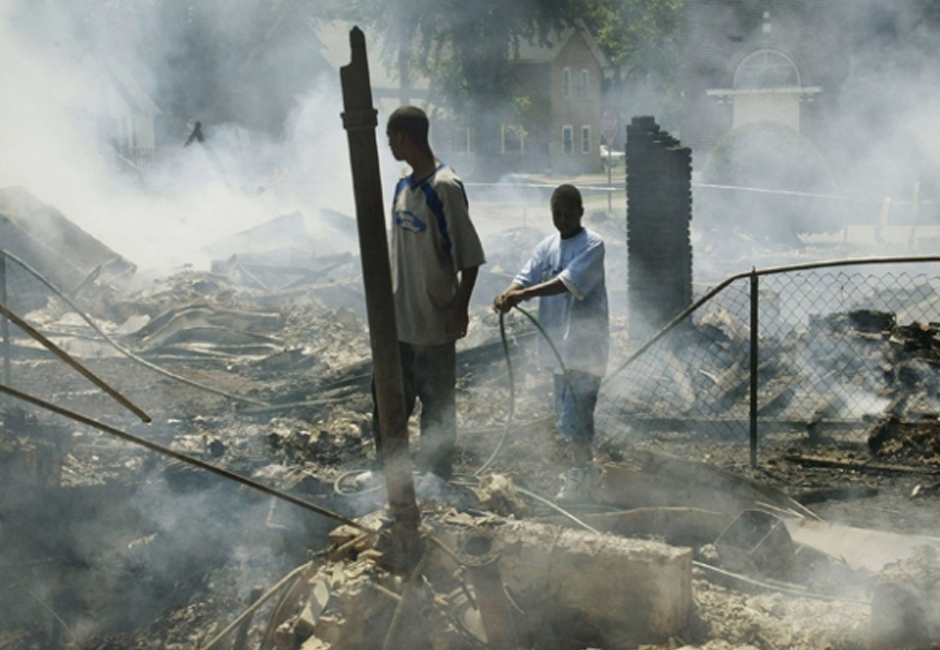
Reason: We live in slums and are treated like scum, hear our cries!
After black motorcyclist Terrance Shurn was chased by a white police officer and died after crashing into a building and dying in Benton Harbor, Michigan, a handful of Black youth rioted for two days to protest disparate living conditions and racial tensions created by inequalities. 300 police officers were deployed to the neighborhood where rioters torched old, dilapidated and vacant buildings. The riots drew attention to the disparities between the predominantly poor, black town and its affluent mostly White neighbor, and indirectly contributed to the Jimmy Carter Work Project being held in Benton Harbor to combat unemployment and assist in building new homes for the residents of the impoverished city.[CS Monitor]
Riot Reason #5: Beer Shortage
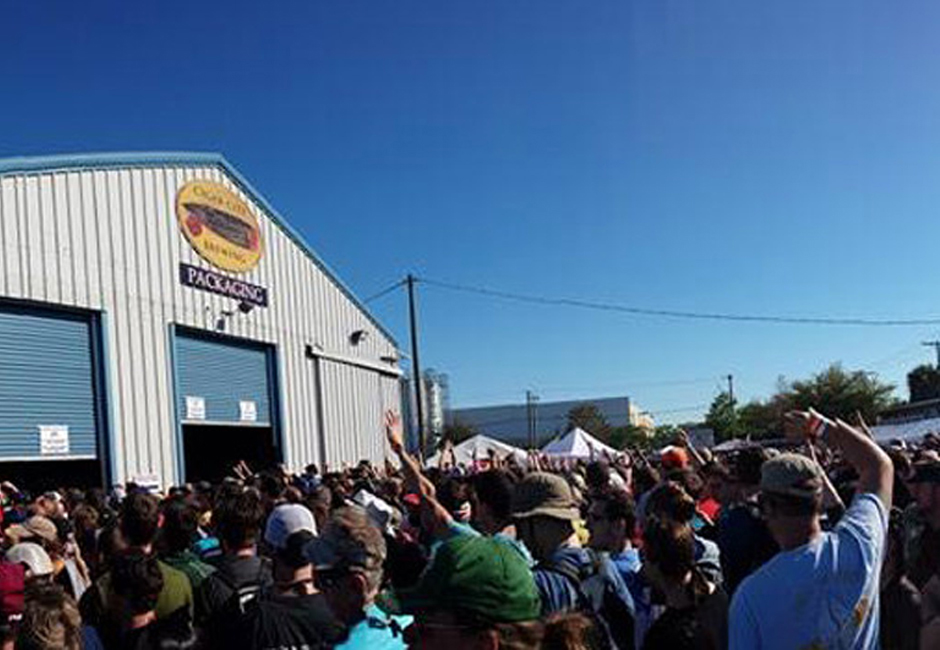
Reason: What the hell!? There’s no more beer! Someone musssttt diiieee!
When Cigar City Brewing Company ran out of beer during their annual release of its most prized stout, Hunahpu’s Imperial, attendees became irate and started a small riot. Officers were called in to he angry mobs and the event has since been cancelled in definitely. There was every reason for a riot right? Some of those people paid good money for a ticket to go to the event where they’d get a free bottle of beer — well some of those people also happened to have counterfeit tickets, but who cares!? They wanted their damn beer and had every right to riot over it! [Tampa Bay]
Riot Reason #6: Sucky Sports
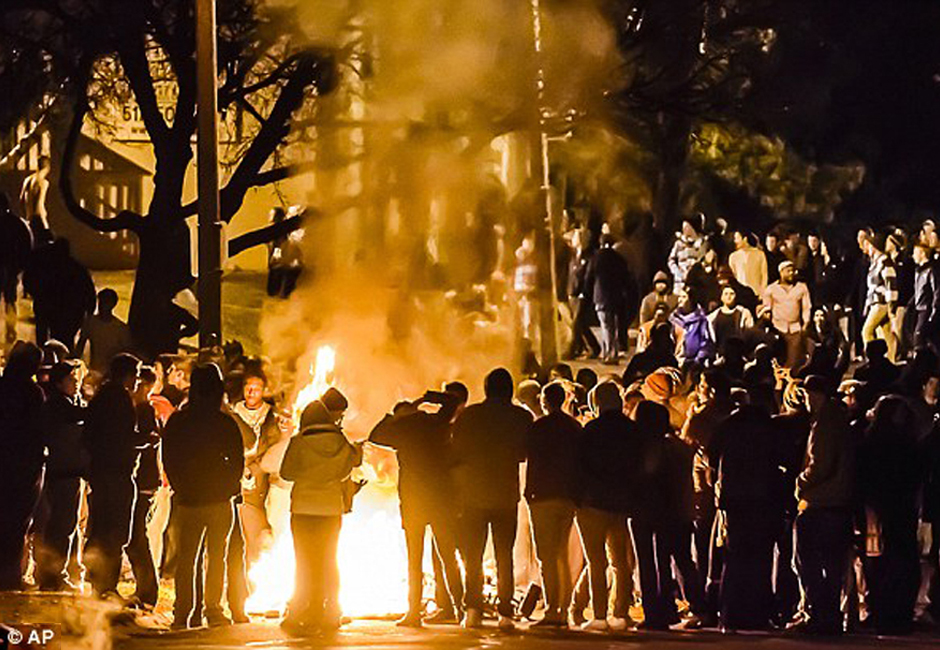
Anarchy: Michigan State University fans riot in East Lansing, Mich., early Sunday
Reason: Our university’s sports team sucks, let’s destroy and vandalize some stuff to prove someone sucks more than they do!
After Michigan State University’s basketball team lost to Duke University in the NCAA Final Four, 5,000 students and fans gathered and burned couches, throw bottles and set fire to a parked car. Police arrived and tear gassed the rioters forcing them to change locations at which point the mob began to vandalize local stores and loot. A student reportedly broke into a Taco Bell and made himself a taco, probably to fuel up for more rioting. By the end of the night, 61 fires were set, traffic signs were destroyed and trees were uprooted causing more than $500,000 in damages. It is approximated that130 people were convicted for the involvement in the riots. [ESPN]
Riot Reason #7: Police Brutality (Again!) And Racial Profiling
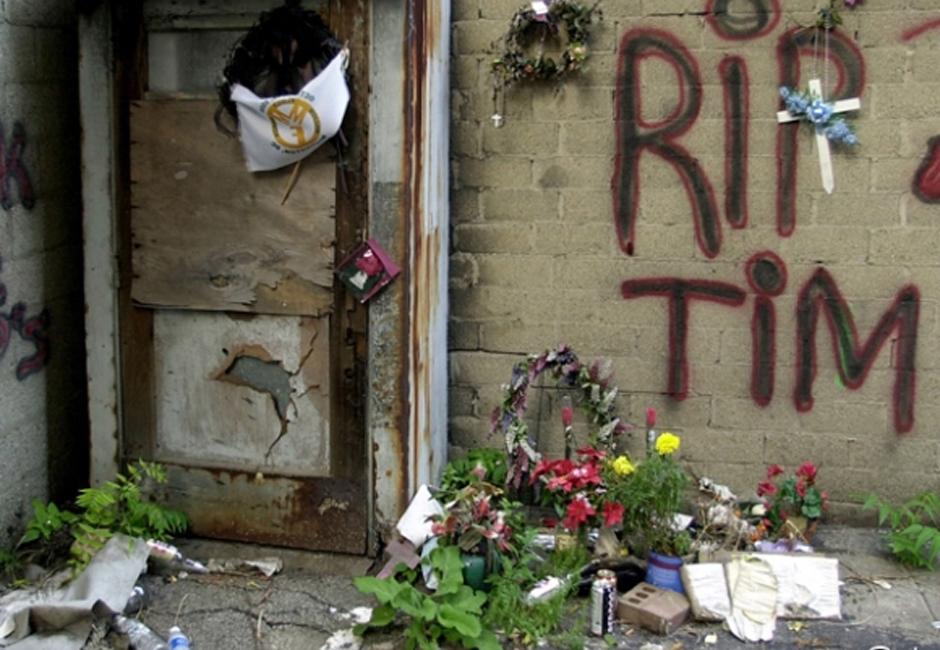
A memorial to Timothy Thomas who was shot and killed by a Cincinnati Police officer in April 2001.
Reason: Police cannot murder or brutalize us because we are Black! Let’s let them know!
2001: In Cincinnati, riots ignited after Timothy Thomas, a 19-year-old African American male was shot and killed by the police. Tensions were already high due to several reports of other incidents of police brutality and racial profiling. Over the course of four nights, rioters threw objects and police, vandalized and looted businesses resulting in an estimated $7 million in damages to local businesses and to the city. [Wikipedia]
Riot Reason #8: Sports Victory
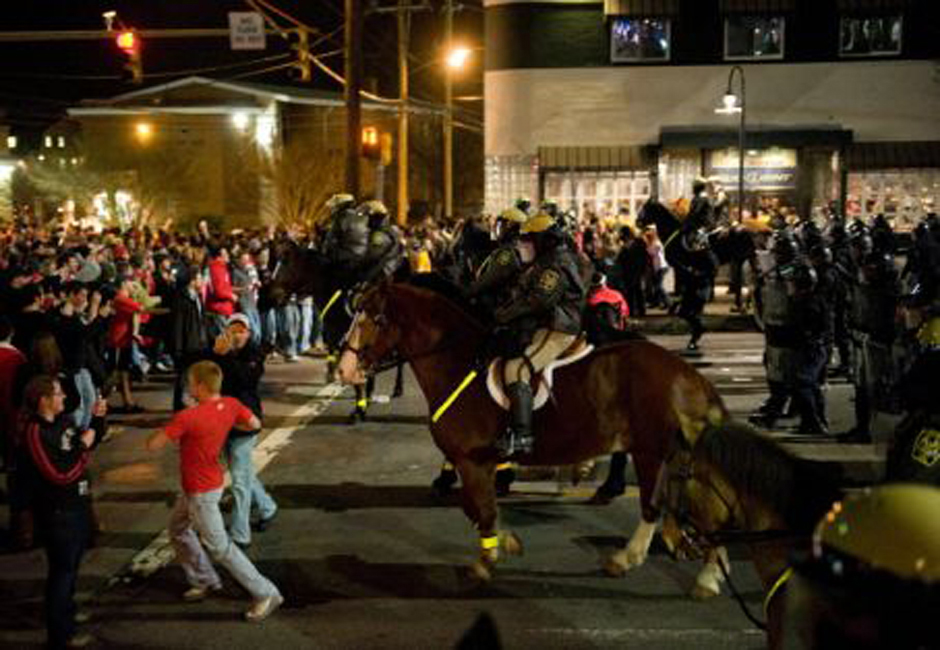
(Photo by Sarah L. Voisin/Post)
Reason: Our University’s sports team is fantastic, let’s destroy and vandalize some stuff to prove someone still sucks!
There are countless examples of University sports fan’s becoming vicious, violent mobs after defeating an opponent. Here are a couple examples:
- University of Maryland, 2002: The team defeated Indiana to claim the NCAA men’s basketball championship and 5,000 hit the streets to celebrate. What’s the best way to celebrate a win? By lighting trash cans and couches on fire and overturning random objects in the street of course. 17 were arrested, 6 police cars were damaged, dozens were injured and a Maryland state trooper has hit in the face with a plank of wood.
- Ohio State University, 2002: The university’s football team defeated its biggest rival, Michigan state, resulting in a crowd of over 5,000 starting 107 fires, damaging 20 cars and littering the streets with copious amounts of trash. 70 were arrested.
Riot Reason #9: Desegregation

Integrating Ole Miss: A Transformative, Deadly Riot
Reason: Our state’s university wants to allow Black people to attend, let’s riot!
In 1962, despite a federal court ordered mandate to integrate the University of Mississippi, the governor refused to admit any Black students because he wanted the school to remain segregated. In the face of this resistance, the federal government pushed to integrate and on October 1, 1962, James Meredith became the first African American student admitted to the university. Several riots broke out, killing two and injuring hundreds. An estimated 200 arrests were made and 35 US Marshalls were shot while attempting to admit Meredith. [USM]
Riot Reason #10: Racial Equality & Civil Rights
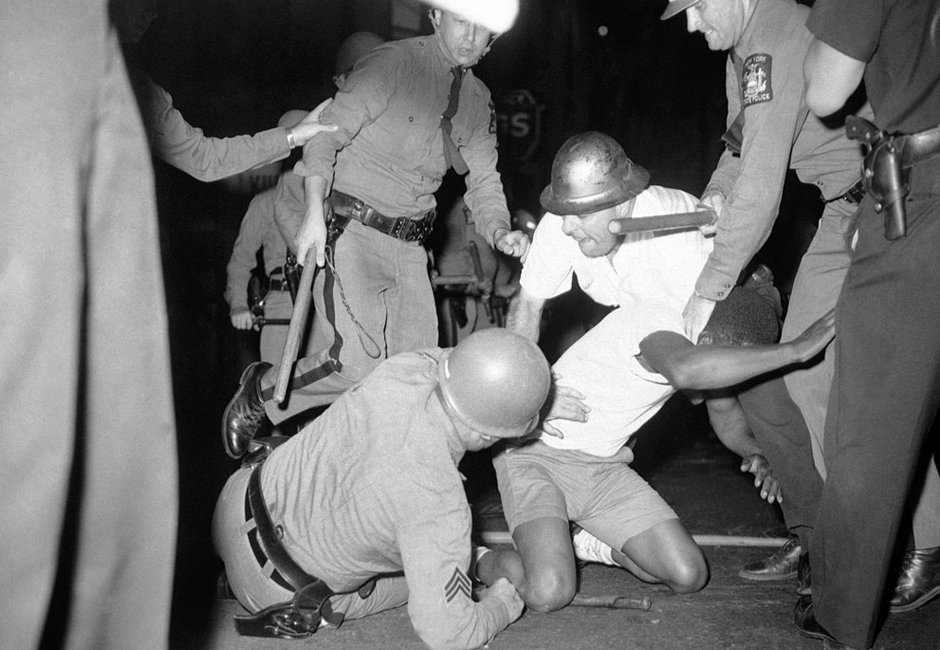
A police officer falls to pavement as he struggles to apprehend a man in Rochester, New York, July 25, 1964. (AP Photo/Alvan Quinn)
Reason: We are angry because we will not be oppressed, marginalized, brutalized or discriminated against because of our race!
In the year 1964, various riots broke out in mostly Black neighborhoods all over the United States in response to outrage over numerous instances of police brutality and murder and in opposition to racial discrimination and oppression. Many of these riots were inspired by the national fight and dialogue for Black civil rights spearheaded by various black leaders and supported by many whites. Cities including but not limited to Cambridge (MD), Harlem (NY), Rochester, Jersey City (NJ), Elizabeth (NJ), Chicago, Cleveland, Newark (NJ), Plainfied (NJ), Los Angeles and San Francisco were involved in such riots. It is difficult to estimate the overall numbers of those who were injured or lost their lives protesting racial discrimination, but the numbers are most certainly in the thousands. Thousands more were arrested and a few hundred million dollars worth of property damage and damage to the cities was reported. [The Atlantic]
More By Tiffanie Drayton >>>
Tiffanie Drayton is a freelance writer and graduate of The New School University. She hopes to one day return to an equal and racially tolerant America.
This piece was reprinted by EmpathyEducates with the kind permission of the Author. We thank Tiffanie Drayton for her enduring spirit and her insights. We believe this treatise is an invitation to think more deeply.











Leave A Comment